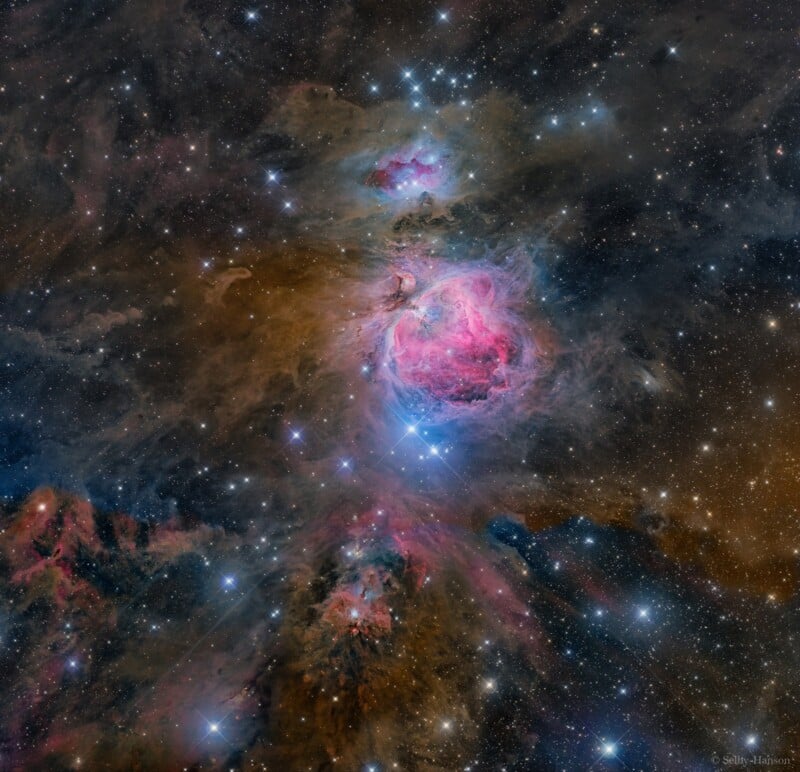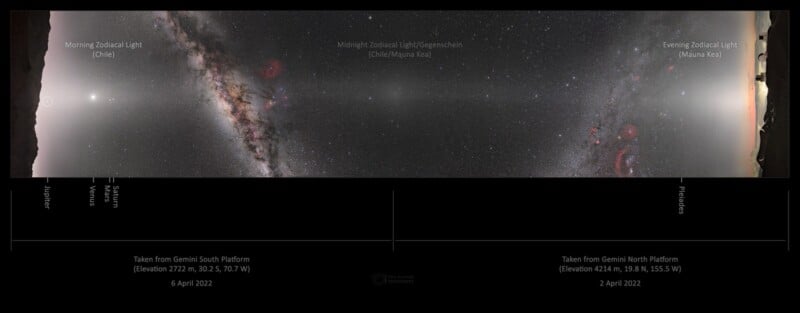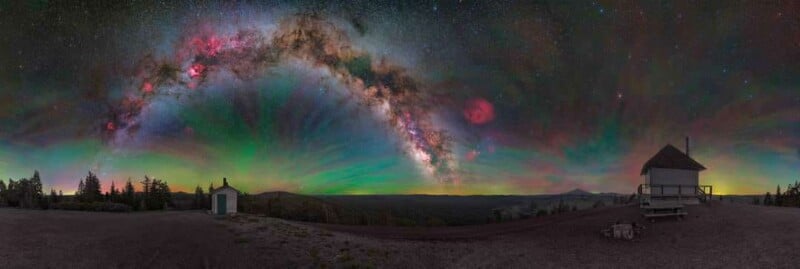Bortle 1: The Best Skies in the World for Astrophotography
![]()
To reveal the real colors of the night skies, you need to find good dark skies. The best sky quality for astrophotography is found in locations classified as Bortle Class 1 on the Bortle scale, which measures night sky brightness.

Imagine standing under a sky so pristine, so untouched by light pollution, that the stars shine with unparalleled brilliance. This celestial haven is known as a Bortle 1 sky, where the sky quality reaches its zenith. In this article, we will delve into the enchanting realm of Bortle 1 skies, exploring the deep-sky objects (DSOs) and celestial waveforms that are visible to the naked eye in this exceptional astronomical environment.
The Quality of a Bortle 1 Sky
The Bortle Scale, developed by John E. Bortle, is a widely used system for classifying the darkness of the night sky. It ranges from Class 1 (the darkest) to Class 9 (the most light-polluted). A Bortle 1 sky signifies an area with minimal light pollution, often found in remote regions, far from urban centers.

In such pristine conditions, the naked eye is capable of discerning intricate details of celestial wonders that are otherwise obscured by light pollution.
Finding a Bortle 1 Location
If you’d like to see if there’s a Bortle 1 location near you in the United States, GO ASTRONOMY has a great list of Bortle 1 sites in the US.
ClearDarkSky also offers a handy Light Pollution Map you can use to browse for dark skies near you anywhere in the world.
Deep-Sky Objects Visible to the Naked Eye
The Milky Way
In a Bortle 1 sky, the Milky Way reveals itself in all its grandeur. Its soft band of light stretches across the night sky, sprinkled with countless stars, nebulae, and clusters. Gazing upward, you will witness a captivating tapestry of cosmic dust and celestial jewels.

Canon EOS Ra | Ioptron Sky Guider Tracker | By Roi Levi
![]()
Andromeda Galaxy (M31)
One of the most breathtaking sights in a Bortle 1 sky is the Andromeda Galaxy, our nearest spiral galactic neighbor. Spanning over six times the size of the full moon, this majestic galaxy appears as a faint, elongated blur of light. With patience and a keen eye, one can perceive its core and perhaps even trace the spiral arms.

Location: Nevada Valley Of fire (Bortle 3)
Orion Nebula (M42)
The Orion Nebula, situated within the iconic constellation of Orion, is a stellar nursery where new stars are born. In a Bortle 1 sky, the nebula’s wispy tendrils and intricate details become readily apparent. The central Trapezium Cluster, composed of young, hot stars, is also discernible, adding to the awe-inspiring nature of this celestial wonder.


Shot in LRGB on our Planewave Delta Rho 350 at Observatorio El Sauce, Chile

Pleiades (M45)
Also known as the Seven Sisters, the Pleiades star cluster is a group of young, hot stars that form a distinct pattern in the night sky. In a Bortle 1 sky, the Pleiades cluster reveals its true splendor, with its brightest stars surrounded by a delicate haze of nebulosity.

Celestial Waveforms
Apart from the DSOs, a Bortle 1 sky allows observers to witness various celestial waveforms with the naked eye. These transient phenomena occur naturally in the Earth’s atmosphere and space. Here are a few examples:
Aurora Borealis and Aurora Australis: The captivating light shows known as the Northern and Southern Lights, respectively, occur when charged particles from the Sun interact with Earth’s magnetosphere. In a Bortle 1 sky, these ethereal displays of shimmering colors dance across the horizon, leaving spectators in awe of their ever-changing patterns.

Location Hofn Westerhorn Iceland (Bortle 1)

Victor Lima – Aurora and Milky Way Vesterhorn Hofn (Bortle 1) Canon 6Da | EF 16-35mm f/2.8L II
Zodiacal Light
This faint, cone-shaped glow is caused by sunlight scattered off interplanetary dust in the plane of our solar system. In a Bortle 1 sky, during the right conditions and at the right time of year, the zodiacal light becomes visible shortly after sunset or before dawn, extending upwards from the western or eastern horizon.



Airglow
Airglow is a faint emission of light caused by various chemical reactions in Earth’s upper atmosphere. In a Bortle 1 sky, this phenomenon can manifest as a subtle, diffused glow that adds a mystical ambiance to the night sky.


Canon Eos Ra | Sigma Art 28mm | MonoLake USA | Bortle 1
Conclusion
The wonders of a Bortle 1 sky are truly remarkable. With minimal light pollution, the naked eye can witness the grandeur of deep-sky objects and experience the captivating celestial waveforms that grace our night sky. Whether it’s the intricate details of distant galaxies or the ephemeral dance of the Northern Lights, a Bortle 1 sky offers a window into the vastness and beauty of the universe.
So, next time you find yourself in a remote location blessed with Bortle 1 sky quality, take a moment to look up and be mesmerized by the breathtaking sights awaiting your gaze.
About the author: Roi Levi is a visual storyteller, landscape astrophotographer, photo tour guide, lecturer, and ambassador. The opinions expressed in this article are solely those of the author. You can find more of his work on Facebook, Twitter, and Instagram.